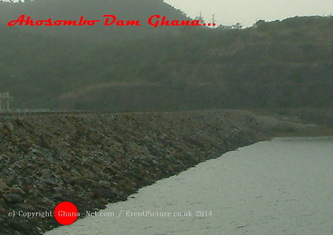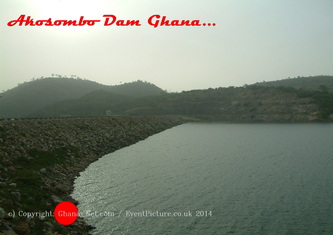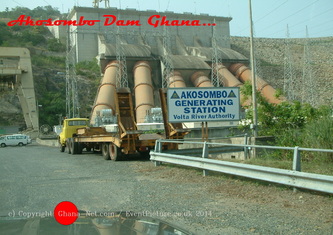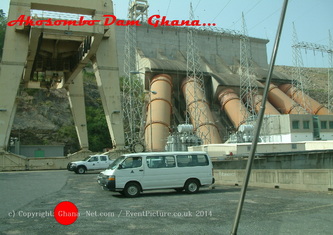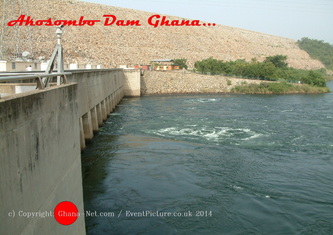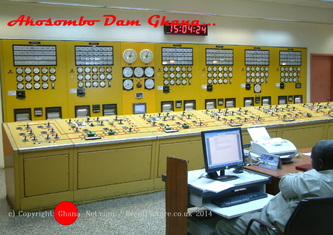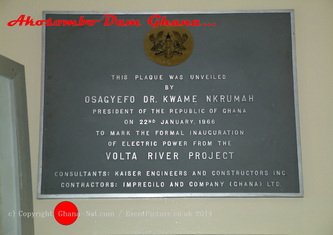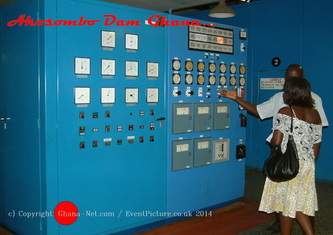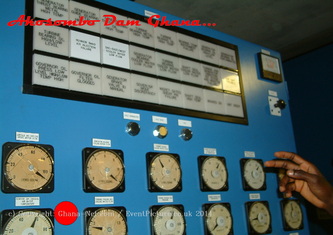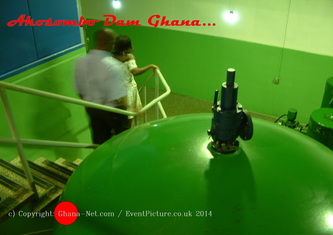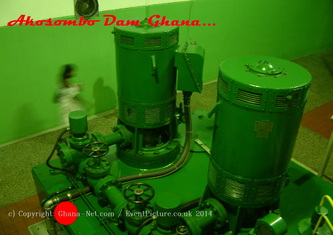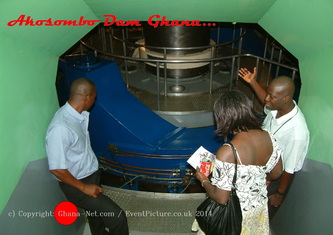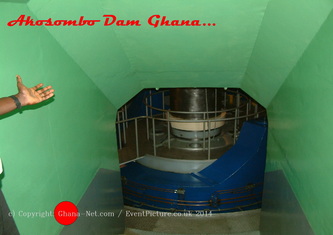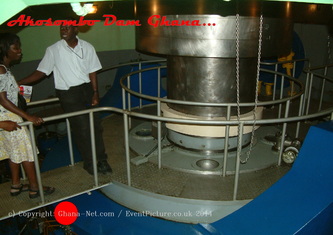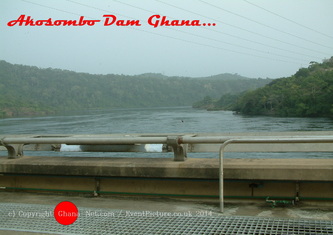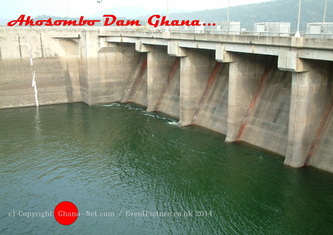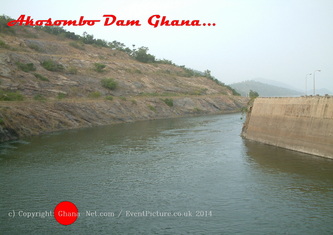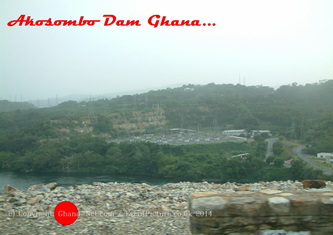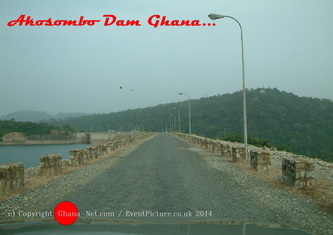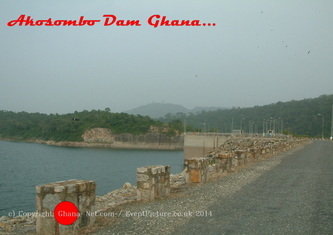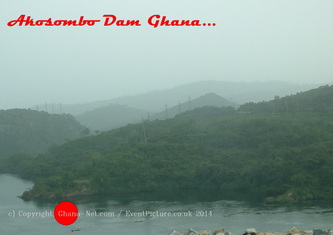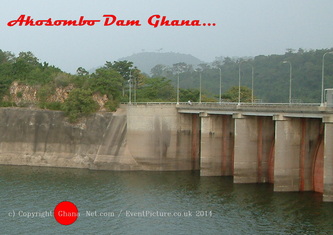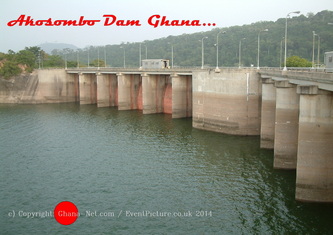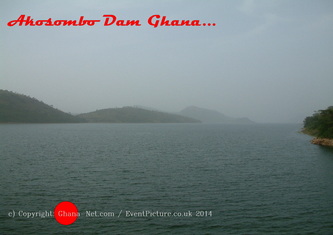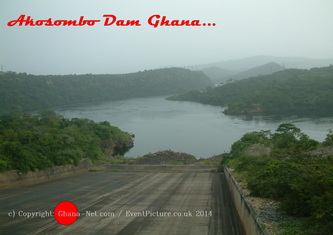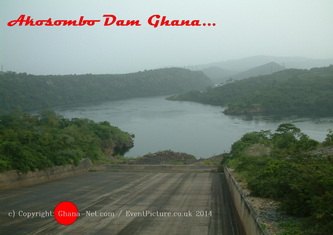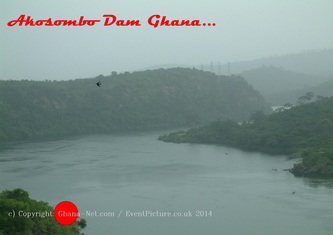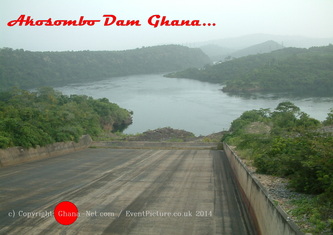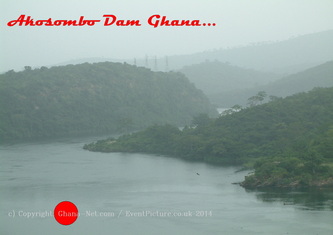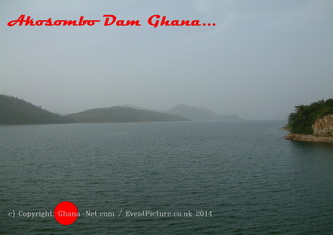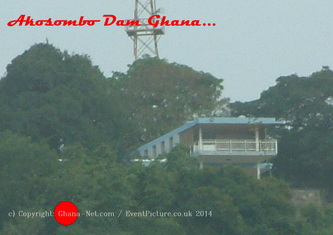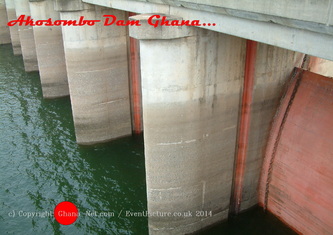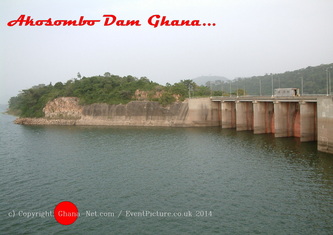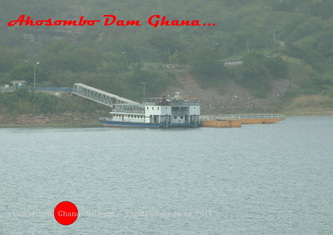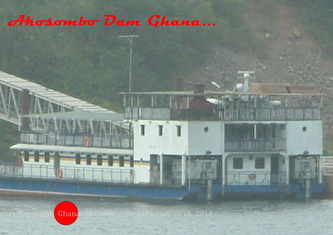Advertisement
|
Pictures of Akosombo Dam, Ghana (c) Ghana -Net.com / EventPicture.co.uk - The Volta River is the main fresh water source for Ghana. ... Lake Volta was created by the construction of the Akosombo dam on the river in the mid 1960's.
The Akosombo Hydroelectric Project (Akosombo HEP), usually referred to as the Akosombo Dam, lies in the southeastern part of Ghana. It is located near Akosombo, a town build mainly for the workers at the dam, early 1960`s. Akosombo has his own, by Volta River Authority run hospital, schools, public swimming pool, market and shops, restaurants, as well some good hotels and guest houses. Akosombo is also home of Akosombo Port, with Ferry connection to Northern Ghana, and the Dodi-Princess cruise-ship (to Dodi Island) Akosombo town in the south of Ghana, Eastern Region in the Asuogyaman District, a district in the east of Eastern Region of Ghana. Akosombo is close to the Adome Bridge at Atimpoku, which connects the Volta region (Hohoe, Ho) of Ghana with the Eastern region (Somania, Koforidua) and furter to Tema, Accra and Greater Accra region.
The imposing Akosombo Dam splits the lake and river into two parts. The Akosombo Dam, also known as the Akosombo Hydroelectric Project, is a hydroelectric dam on the Volta River in southeastern Ghana in the Akosombo gorge and part of the Volta River Authority. The construction of the dam flooded part of the Volta River Basin, and led to the subsequent creation of Lake Volta. Lake Volta is the largest man-made lake in the world by surface area. It covers 8,502 square kilometres (3,283 sq mi), which is 3.6% of Ghana's land area. With a volume of 148 cubic kilometers Lake Volta is the world's third largest man-made lake by volume, the largest being Lake Kariba which is located between Zimbabwe and Zambia in Southern Africa and contains 185 cubic kilometers of water. The primary purpose of the Akosombo Dam was to provide electricity for the aluminium industry. The Akosombo Dam was called "the largest single investment in the economic development plans of Ghana." Its original electrical output was 912 megawatts (1,223,000 hp), which was upgraded to 1,020 megawatts (1,370,000 hp) in a retrofit project that was completed in 2006.
The dam was built between 1961 and 1965. Its development was undertaken by the Ghanaian government and funded 25% by the International Bank for Reconstruction and Development of the World Bank, the United States, and the United Kingdom. The dam's power plant contains six 170 megawatts (230,000 hp) Francis turbines. Each turbine is supplied with water via a 112–116 metres (367–381 ft) long and 7.2 metres (24 ft) diameter penstock with a maximum of 68.8 metres (226 ft) of hydraulic head afforded. The flooding that created the Lake Volta reservoir displaced many people and had a significant impact on the environment. |
Advertisement
|
The Akosombo Dam benefited some industrial and economic activities from the addition of lake transportation, increased fishing, new farming activities along the shoreline, and tourism. The power generated has provided for primary interests within Ghana, while also supplying power to the neighboring countries of Togo and Benin. Ghana’s industrial and economic expansion triggered a higher demand for power, beyond the Akosombo's power plant capabilities. By 1981, a smaller dam was built at the town of Kpong, downstream from Akosombo and further upgrades to Akosombo have become necessary for maintaining hydropower output.
The dam is a 660 metres (2,170 ft) long and 114 m (374 ft) high rock-fill embankment dam. It has a base width of 366 metres (1,201 ft) and a structural volume of 7,900,000 cubic metres (10,300,000 cu yd). The reservoir created by the dam, Lake Volta, has a capacity of 148 cubic kilometres (120,000,000 acre·ft) and a surface area of 8,502 square kilometres (3,283 sq mi). The lake is 400 km (250 mi) long. Maximum lake level is 84.73 metres (278.0 ft) and minimum is 73.15 metres (240.0 ft). On the east side of the dam are two adjacent spillways that can discharge approximately 34,000 cubic metres per second (1,200,000 cu ft/s) of water. Each spillway contains six 11.5-metre (38 ft) wide and 13.7-metre (45 ft) tall steel floodgates.
The dam is a 660 metres (2,170 ft) long and 114 m (374 ft) high rock-fill embankment dam. It has a base width of 366 metres (1,201 ft) and a structural volume of 7,900,000 cubic metres (10,300,000 cu yd). The reservoir created by the dam, Lake Volta, has a capacity of 148 cubic kilometres (120,000,000 acre·ft) and a surface area of 8,502 square kilometres (3,283 sq mi). The lake is 400 km (250 mi) long. Maximum lake level is 84.73 metres (278.0 ft) and minimum is 73.15 metres (240.0 ft). On the east side of the dam are two adjacent spillways that can discharge approximately 34,000 cubic metres per second (1,200,000 cu ft/s) of water. Each spillway contains six 11.5-metre (38 ft) wide and 13.7-metre (45 ft) tall steel floodgates.

